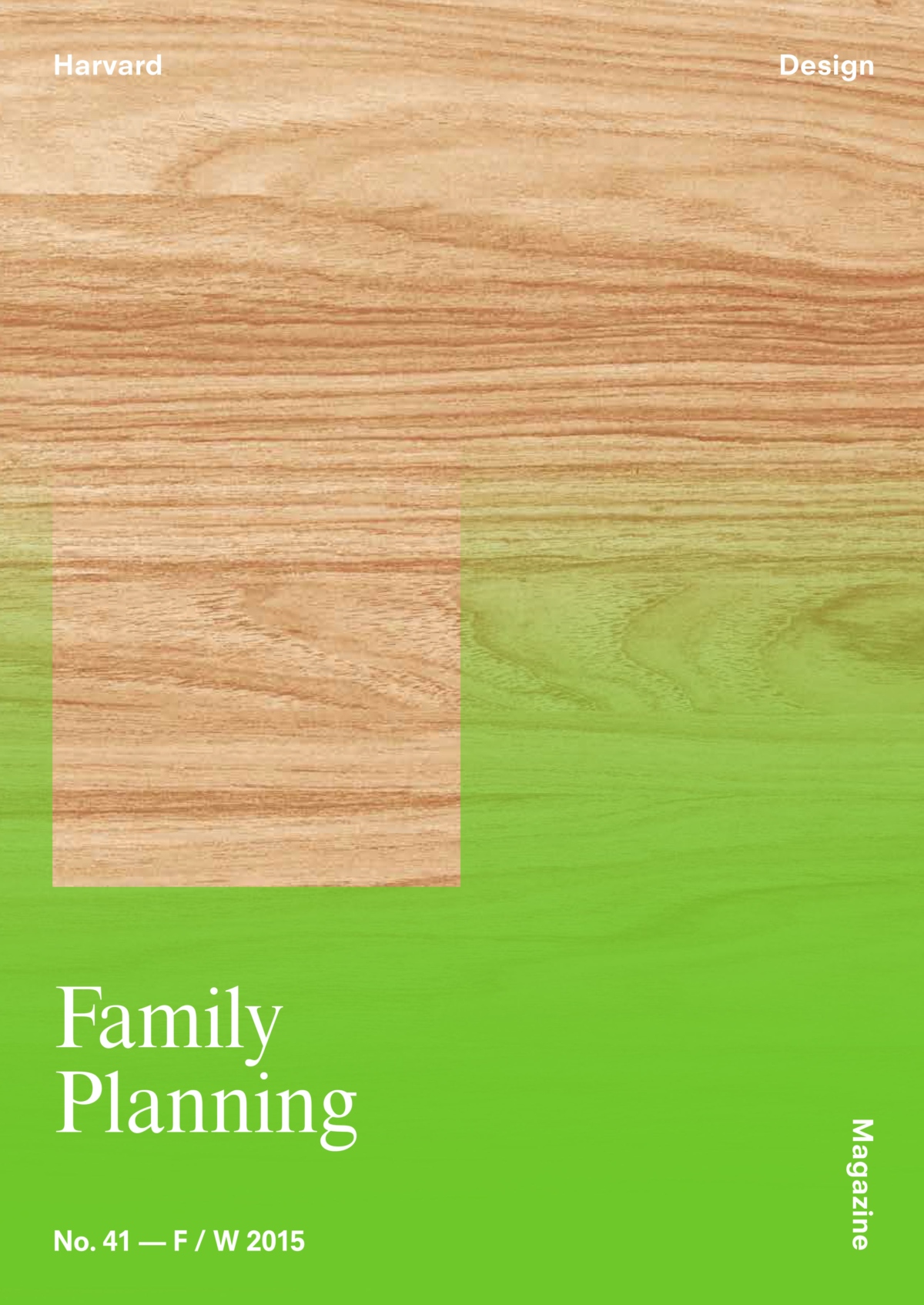Family Planning

As family configurations evolve and atomize, and “exceptions” become the norm—divorced, blended, solo, cooperative, childless, single-parent, widowed, queer, aging, migrant, transnational, foster, adoptive, multigenerational—the material construct of our homes, institutions, and cities asks to be reconsidered.
This issue of Harvard Design Magazine is based on the premise that we need to imagine new, different spaces for living together. It confronts the persistent myth of the nuclear family and reconsiders the architectures that contain and reproduce it. It examines how family realities influence, and are influenced by, the spaces we inhabit, and the patterns of our existence in cities, suburbs, and the countryside. Do these spaces correspond to the way we live, or want to live? Do they enable and support, or dictate and confine? And how do other social constructs—corporations, institutions, communities—mirror or redefine familial configurations?
“Family Planning” looks at spaces of home and belonging, and notions of property, ownership, and connection, addressing questions of what constitutes a family and the legal overtones of inclusion, citizenship, and basic rights. In doing so, it interrogates and reimagines the space of the family unit, presenting alternatives, past and future, for diverse family configurations to flourish in the built environment.
Edited by Jennifer Sigler and Leah Whitman-Salkin.
Designed by With Projects, Inc.
200 pages, softcover, $16.00
ISSN 1093-4421
Published by the Harvard University Graduate School of Design, Fall/Winter 2015.